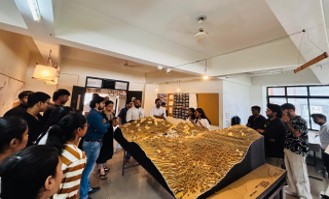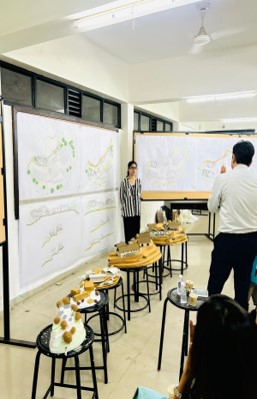The L.J. School of Architecture (LJSA), a constituent of L.J. University in Ahmedabad, Gujarat, is committed to nurturing creative, socially responsible, and technically competent architects. In alignment with the National Assessment and Accreditation Council (NAAC) standards, LJSA’s teaching methodology reflects a strong commitment to student-centric pedagogy, industry integration, and innovation. This report highlights the three best teaching practices that distinguish LJSA, showcasing its dynamic approach to architectural education.
1. Studio-Centric Holistic Curriculum Integration
At the heart of LJSA’s pedagogy is the Architectural Design Studio, which carries the highest credit weight in the curriculum. All core and elective subjects—such as Building Construction, Structures, Climatology, Urban Planning, History of Architecture, and Sociology—are designed to feed into studio-based design thinking and projects.
Key Features:
-
Integration of theoretical and practical learning through studio work.
-
RSP (Related Study Programs) embedded within studio frameworks.
-
Emphasis on cross-disciplinary learning including environmental studies, sociology, and sustainability.
2. Experiential and Participatory Learning through Field Visits & Industry Exposure
LJSA actively promotes experiential learning through site visits, internships, and hands-on research. Field exposure is embedded as a core academic activity, enhancing student understanding of real-world architectural practice.
Initiatives Include:
· - Visits to GIFT City, Dholera Smart City, Kalamkhush Paper Factory, brick kilns, etc.
· - Hands-on learning through interaction with professionals and real construction sites
3. Innovation Ecosystem and Skill-Based Workshops
LJSA has cultivated a thriving innovation ecosystem through workshops, cultural events, and studio installations that emphasize creativity, craftsmanship, and contemporary practices.
Key Practices:
· - Workshops in String Art, Lipan Art, Kinetic Structures, Mosaic Art, Wall Painting, etc.
· - Skill-building in metal, wood, and clay workshops.
· - Cultural festivals like Tatsat fostering peer learning and creativity.
Impact: This practice fosters creativity, artistic expression, and technical skill development. It empowers students to explore non-traditional methods alongside modern tools









